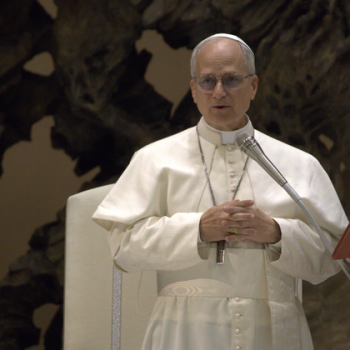We’ve reached the last week of Lent, and with it the Church calendar and the Gospels read in the liturgy have emphasized the stories of saints in the New Testament: men and women who may be referred to as friends of Christ. These figures offer exemplary virtues which denote their proximity to Christ. For us, as Christians living nearly two millennia distant from the time in which Jesus walked the Earth, these saints display the expectations that come with sainthood, the signs of being a friend of Christ.
On this, the Monday of Holy Week, we heard from the Gospel that Jesus meets with Lazarus, Martha, and Mary at Bethany. Post-resurrection Lazarus becomes living proof of yet another miraculous sign worked by the Messiah. As a result, many come to get a gander at the revitalized friend of Jesus:
“When the great crowd of the Jews learned that he was there, they came, not only on account of Jesus but also to see Lazarus, whom he had raised from the dead. So the chief priests planned to put Lazarus also to death, because on account of him many of the Jews were going away and believing in Jesus” (John 12:9-11).
Because Lazarus is a faithful follower of Christ, because he knows that he was deceased and is now alive once more, he becomes another obstacle to the rigid ways of Jewish tradition as well as the attention given to the priests. Plans are being discussed for his elimination.
In the same excerpt in today’s Gospel, we can gather that Mary also came under a type of persecution. After Mary uses ointment to bathe Jesus’ feet, she is ridiculed by Judas Iscariot, the soon-to-be traitor of the Son of man. But Jesus retorts that what Mary has done is a beautiful thing.
Aside from this passage from the Fourth Gospel, one of today’s saints was yet another follower of Christ who stuck his neck out on the line for his convictions. March 29th is the feast day of St. Joseph of Arimathea, who confronted Pontius Pilate and inquired whether the corpse of Jesus might be removed from the Cross.
In all three instances, these early followers of Christ had a certain boldness about their character. Joseph of Arimathea, unlike Peter in his threefold denial of Christ, decided not to shy away from his relation to Jesus. Instead, he went to the Roman representative who handed the Lord over to death to ask if the body might be taken down and buried. The meeting could have gone differently, had it suited Pilate.
Joseph was willing to take chances for the sake of Christ. Mary was willing to “empty her purse” for precious ointment, which she then emptied out onto the feet of Jesus. Love of Jesus outweighed any worry in her mind. Lazarus, grateful for new life, could see that he was a walking sign of faith. He likely realized, and quickly at that, that he was called to offer himself as proof of the Messianic nature of Christ and His ministry. Doubtlessly in tune with the political atmosphere of the time, Lazarus would recognize the dangerous circumstances that he might be put in. The life he had newly reclaimed was laid at the disposal of his Lord. He might become a target.
By and large, there are two important points all these saints illustrate by their loyalty to Christ.
Firstly, their actions suggest that each of us is called to give of ourselves to God, Who has bestowed on us everything we have. Mary and Joseph of Arimathea, in particular, showcase this Christian attribute. Mary gives generously when she buys the ointment and pours it on Jesus’ feet – an anointing that points toward His death and burial. Later, Joseph – out of both courage and generosity – provides a new tomb in which the body of Jesus may be put to rest. Both acts of self-giving lead to more glorious outcomes; Mary is praised by Christ Himself, and Joseph’s tomb becomes the locale for one of the most transformative moments in salvation history.
Secondly, these saints all show that they’re willing to lose something if need be if only to keep their relationship with Christ. Joseph risks penalization from Pilate, or worse. Mary risks her public dignity. Lazarus, perhaps, is willing to risk his very life for the Man Who instilled it within him again. The lesson for us is: we must be willing to testify to our faith and to suffer for it.
As Thomas à Kempis writes in The Imitation of Christ:
“All our peace in this miserable life is found in humbly enduring suffering rather than in being free from it. He who knows best how to suffer will enjoy the greater peace…”
Amid the craziness of the next week, let’s try to find peace by suffering with Christ and by giving ourselves to others.















